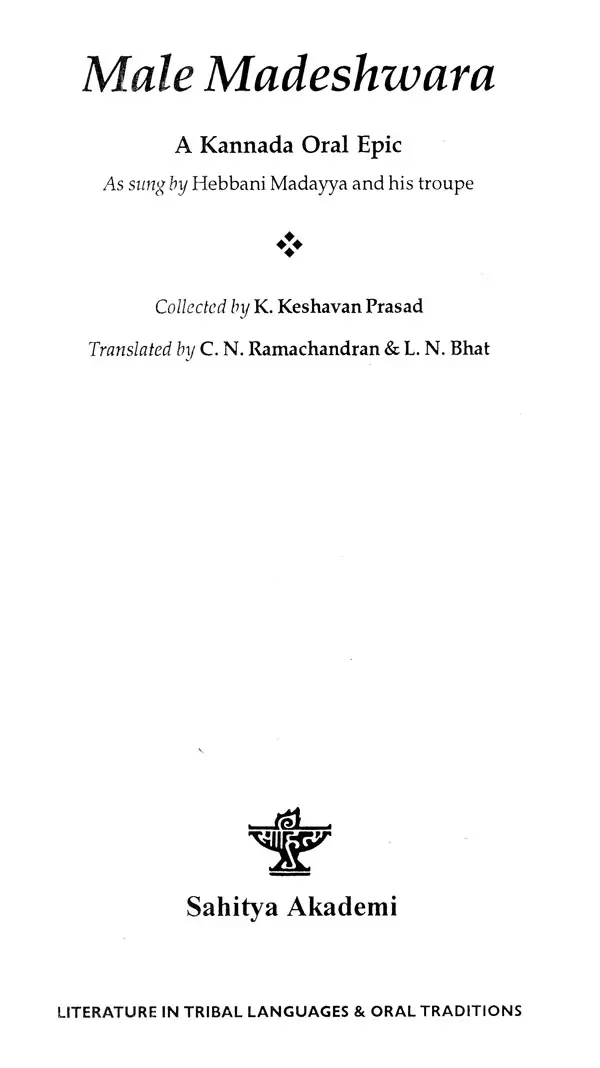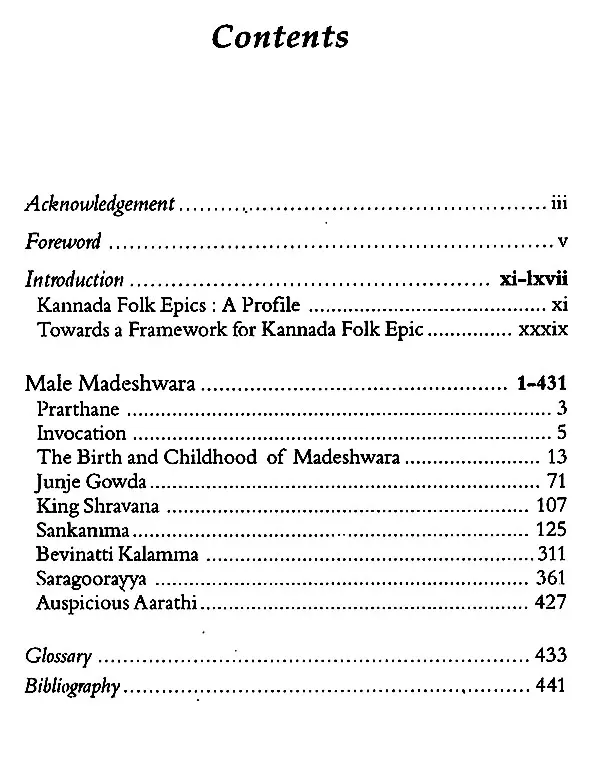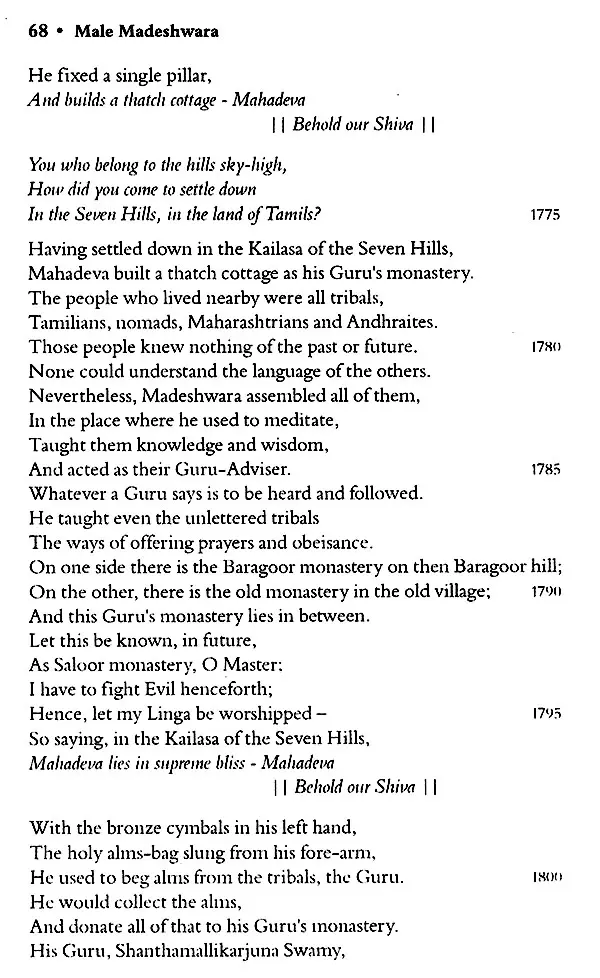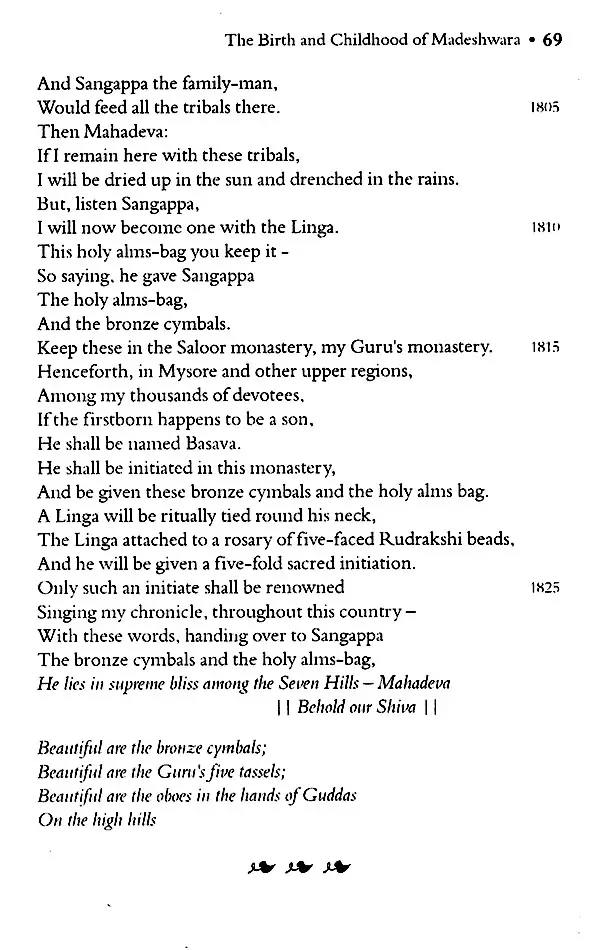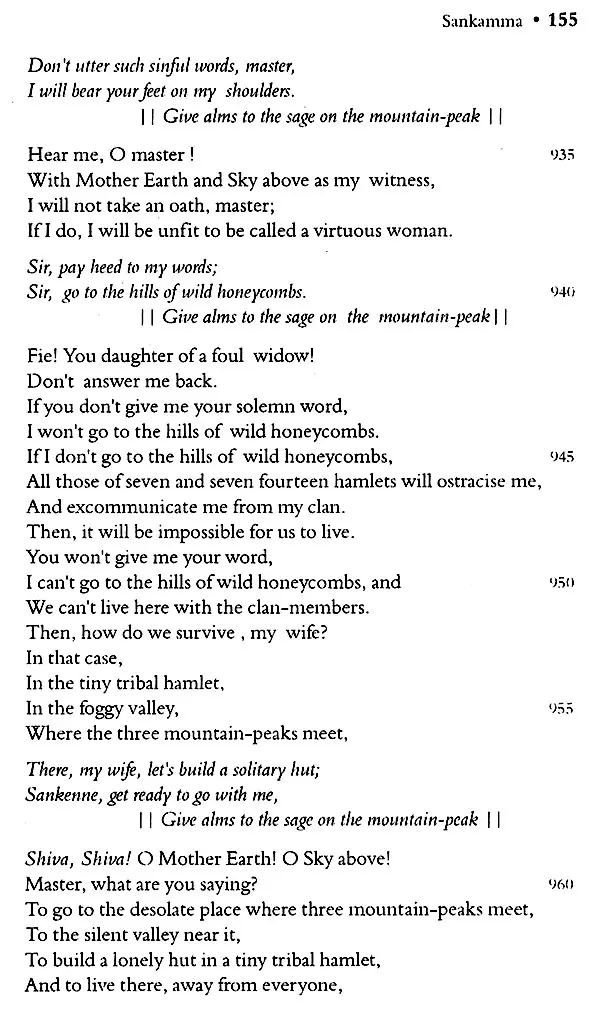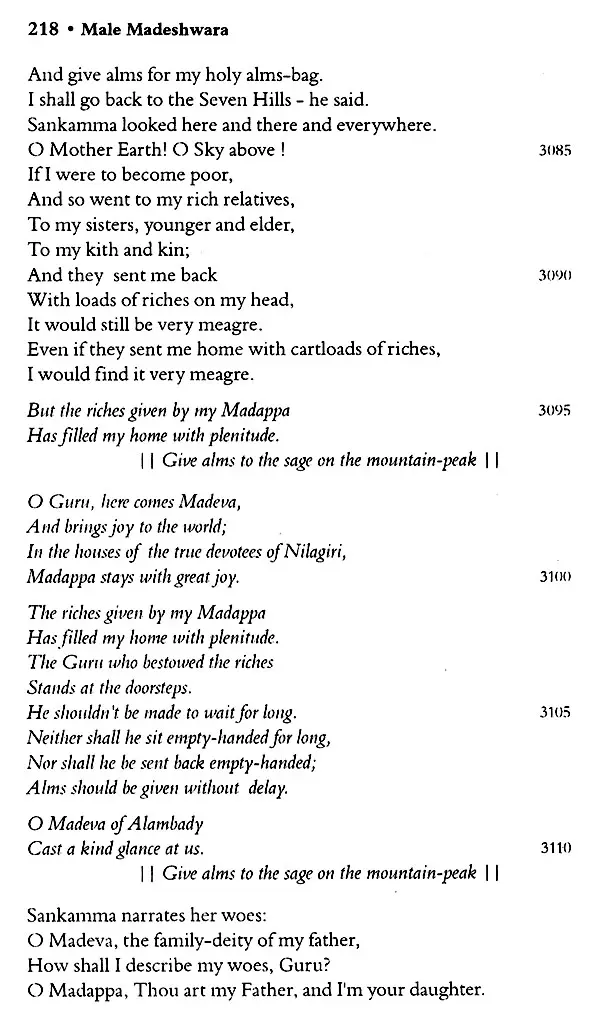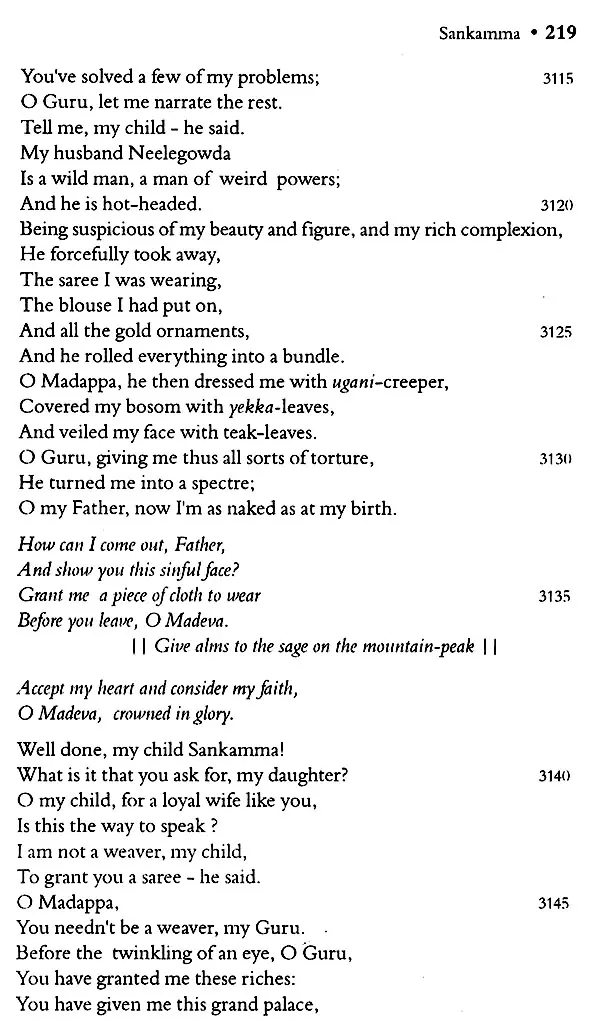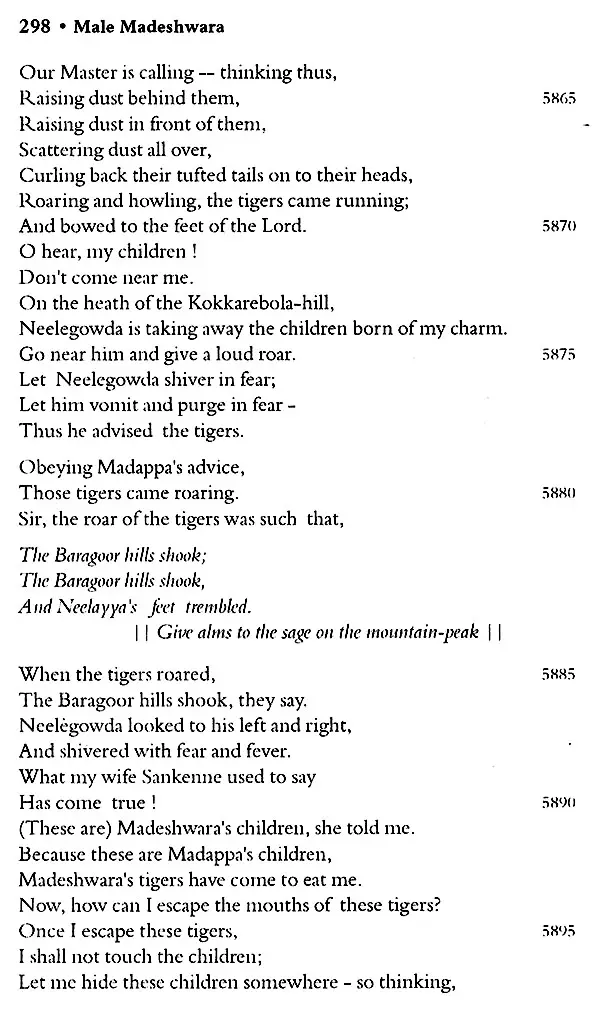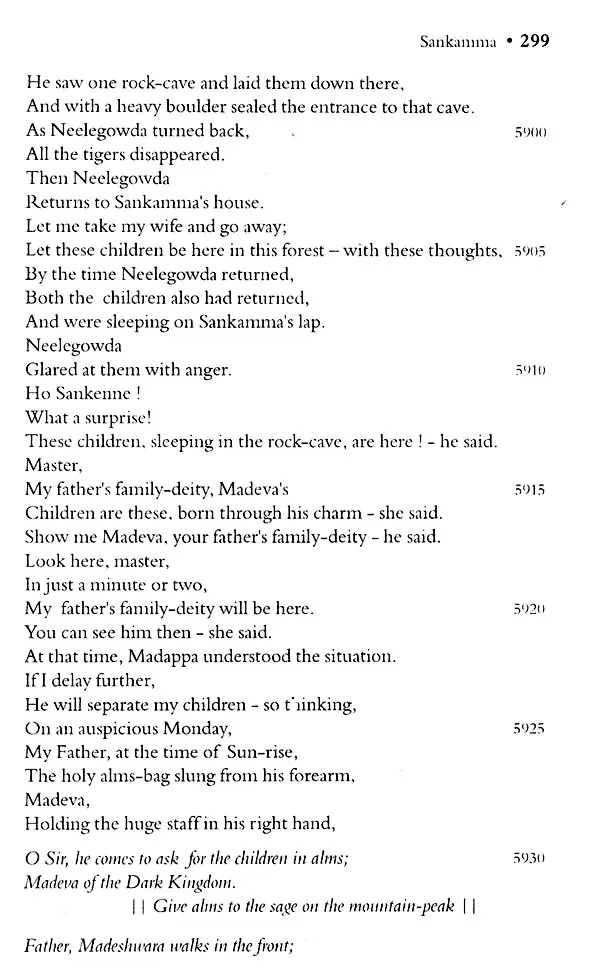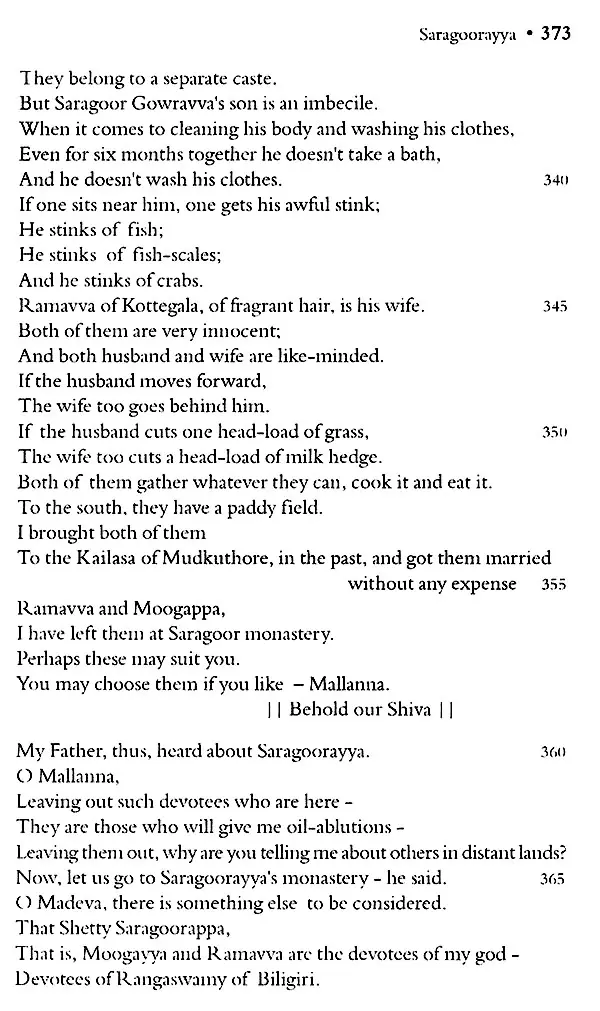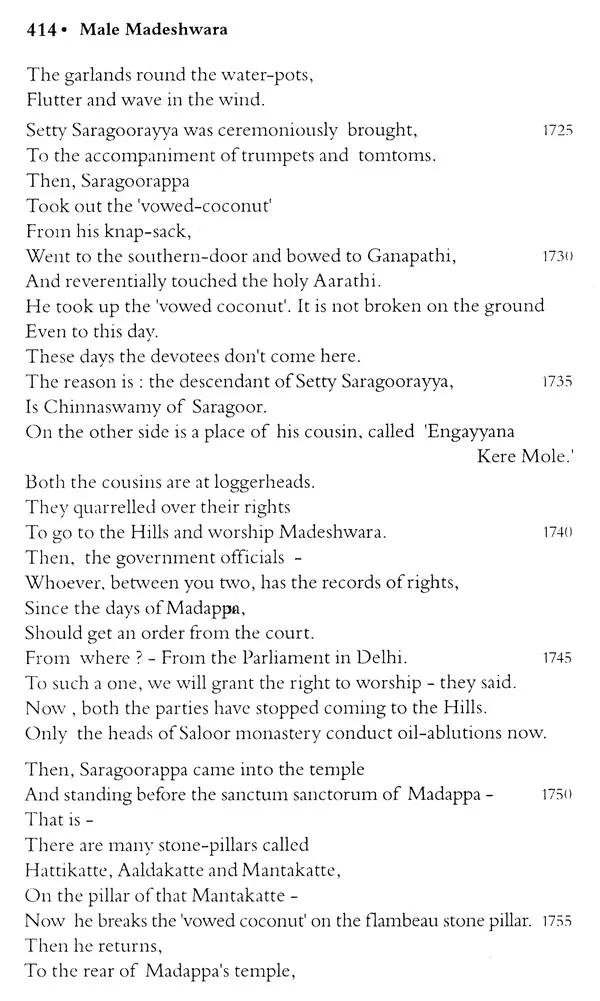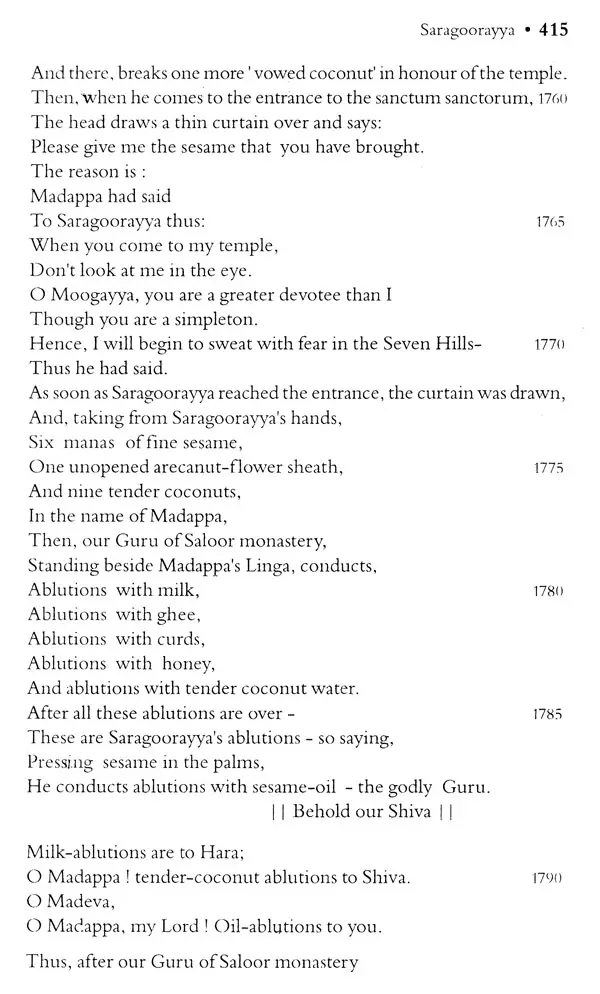
Indian Literature in Oral Traditions: Male Madheshwara (A Kannada Oral Epic)
Book Specification
| Item Code: | UAO834 |
| Author: | C. N. Ramachandran & L. N. Bhat |
| Publisher: | SAHITYA AKADEMI, DELHI |
| Language: | English |
| Edition: | 2001 |
| ISBN: | 812600925X |
| Pages: | 511 |
| Cover: | HARDCOVER |
| Other Details | 9.00 X 6.00 inch |
| Weight | 780 gm |
Book Description
At first sight, it may appear to be slightly perverse to write about Indian epics, for the concept of an 'epic is not indigenous to India. The Sanskrit Mahabharata and Ramayana, for instance, are two texts which probably come as close to being epics as any that the subcontinent has produced. Yet not merely are they not traditionally assigned to any genre that answers even approximately to the English term 'epic', they are not even assigned to the same genre as each other: the Mahabharata is most commonly regarded as an inhasa or history, while the Ramayana is reckoned to be a kavya or literary work: - indeed, it is reckoned to be the first kavya Putting aside neologisms such as virarazatmaka mahakavya, no Indian language known to me has any word that could be used naturally to translate 'epic. These days, when it is generally accepted that we should always strive to describe a culture in terms of the native categories employed by its own members, the phrase 'Indian epics begins to sound worryingly similar to 'sweet chilies'.
And yet if we wish to compare aspects of one culture with aspects of another, we shall have to accept a certain degree of licence in dealing with both, for it is highly improbable that the concepts and nomenclature of one will map conveniently on to those of other indeed, if they did, the comparison would be profoundly uninteresting. And surely no one would take academic correctness to the point of ruling out all cross-cultural comparison on the grounds that we can never devise a language in which such comparisons can be expressed with total and impartial accuracy. We seem to be in something of a quandary here. Much of the difficulty probably springs
1) Folklore Studies in Karnataka
Kannada, the state language of Karnataka, belongs to the Dravidian family of languages. Karnataka, one of the southern states of India. covers an area of roughly 1.97.791 Sq. km., with a population of about fifty millions. The first available stone-inscription in Kannada (called 'Halmidi Inscription') goes back to 450 a.d., and the first literary epic in Kannada, Vikramarjuna Vijaya by Pampa, belongs to the tenth century. Though Kannada is the language of the state, there are many other languages widely spoken including Tulu, Konkani. and Kodava. Similarly, it is the home for many religions besides Hinduism such as Jainism, Veerashaivism, Islam and Christianity.Obviously, various forms of folklore must have existed in Kannada (as in other Indian languages) since ancient times. The famous work of Tamil, Silappadikaram, of the second century. mentions folk-performers from Karnataka. A particular stanza-form called 'Tripadi (Triplet), a very common verse-form of folk poetry in Kannada, was used in the seventh century itself. However, we do not know much about the varied folk-forms or folk-performances of the past since scholars and poets considered them 'vulgar, fit for the entertainment of only the ignorant masses. They concentrated only on the written and sophisticated forms of expression. A rare exception is the ninth-century work on poetics in Kannada. Kavirajamarga of Srivijaya, which briefly mentions a few folk theatrical forms called 'Chattana' and 'Bedande'. However, despite the scholars' disdain, there was much give-and-take between the oral and written forms of expression; and this continues even to this day.
It was only during the colonial period of India that scholars, led by the missionaries, began to show serious interest in Kannada folkore. Arguably, John Laden, a student of Sir Walter Scott, was the first to collect and publish Kannada ballads and folksongs, around 1800. He was followed by Fr. Moegling, Rev. Kittel, Charles Gover, Mary Freere, and many others, who systematically went about collecting, translating, and publishing folksongs, ballads, and proverbs. Kannada scholars took up this work in right earnest in the twentieth century. The major work in this direction was the publication of Garathiya Hadu by Halasangi brothers in 1931. Other major Kannada folklore-scholars in pre-independence period include Sreekantesha Gowda, N. Chinnappa, Archaka Rangaswamy, Gorur Ramaswamy Iyengar, Karim Khan, and Mathighatta Krishnamurthy. An interesting point to be noted here is that during the pre independence period, work in the field of folklore was a part of the newly-awakened nationalistic spirit and the nation-wide struggle for independence. It was an attempt to discover and revive one's own cultural and literary roots in order to counter the cultural hegemony of the colonisers.
Book's Contents and Sample Pages
